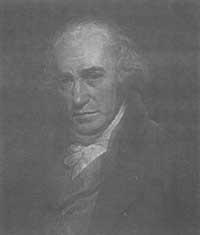James Watt
This Scottish engineer was born on January 19, 1736 in Greenock, Renfrew. Her mother died as a young woman and she was dedicated to health.
His father was a rich merchant, but economically he didn't work well in James's youth. Then the young Watt went to England and began working in London at the age of seventeen. There he spent a year studying how the measuring devices were made.
In 1756 he returned to Scotland with the intention of starting to manufacture machines on his own in Glasgow. However, the City Council did not allow him to study because he had not spent enough time. Then he had the opportunity to work at the university because he did not depend on the city council.
At the University of Glasgow he met Joseph Black and received from him many discoveries for the heat generation of evaporation. As a result, it occurred to him to improve the machines that circulated with water vapor. Savery and Newcomen had invented several machines to operate water pumps, but their performance was very low.

In 1764 a London mechanic, unable to repair, left in the hands of Watt a Newcomen perfumery machine that was sent to the University. James repaired the machine, but it also occurred to him to improve it. In the Newcomen machine, the steam chamber had to cool to condense the steam and thus form the vacuum. Then the chamber was filled with steam, but being cold it took many initial vapors to reheat the chamber. The loft was heated, cooled with water and heated again with a lot of energy.
Watt introduced another camera (condenser) in the cycle. One chamber (cylinder) was always hot and the other was always cold. Cooling and heating were carried out simultaneously in two zones.
By 1769 Watt had achieved a better and faster machine than Newap. Other improvements built into your machine. On both sides of the piston (and not at the same time) steam was introduced by pre-entering atmospheric pressure. By entering the steam on both sides and condensing, atmospheric pressure caused a rapid displacement of the plunger on both sides.
In 1774 he met with capitalist Matthew Boulton to manufacture and sell his steam engines.
It can be said that in 1784 he used steam to heat the office and invented steam heating.
Between 1780 and 1790 he invented more mechanisms to turn the rectilinear movement of the piston into turning motion. Therefore, with rectilinear and rotating motion, their steam engines could be used in numerous activities. Soon they started in the boilers to operate the bellows that generated the air stream of the oven and activate the gabies that ordered the mineral.
Thus, the Watt steam engine immediately became the main driving force and by 1800 they worked in Britain a fortnight. At that time the textile industry had already begun to be machined in England, and thanks to steam engines the factories could be far from the waterfalls, as they only needed coal and water to make fire. With the rise of heavy industry, the craft of yesteryear lost strength. In other words, the industrial revolution had already begun.
In 1875, Watt was appointed to the Royal Society of London and three years later invented the centrifugal regulator. The regulator automatically controlled the amount of steam coming out of the machine. The regulator had a vertical shaft and two balls. The faster the axis rotated, the two balls moved further away from the axis by centrifugal force effect, while the steam output was closed. When less steam came out, the regulator rotated more slowly and the balls went down opening more outlets. In this way the steam output was kept automatically controlled between both limits.
Watt also performed some tests to measure power. With a very strong horse he climbed 150 pounds at a height of four feet in a second and defined equine power as 550 pounds per feet divided in seconds. In the metric system the power unit is called watt, but the horsepower is 746 watts.
In 1800 Watt, famous and enriched, retired. He died on 19 August 1819 in Hathfield near Birmingham.
Buletina
Bidali zure helbide elektronikoa eta jaso asteroko buletina zure sarrera-ontzian











